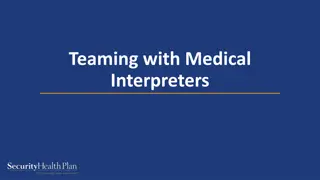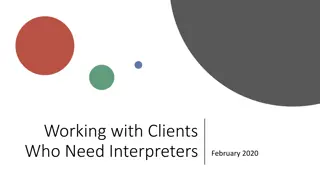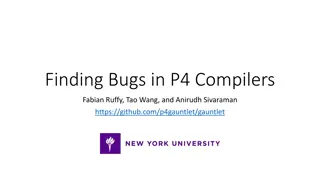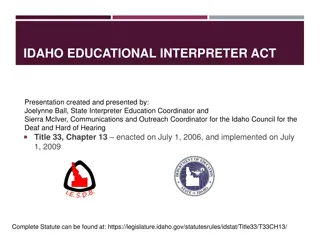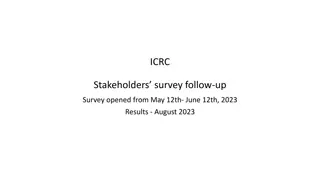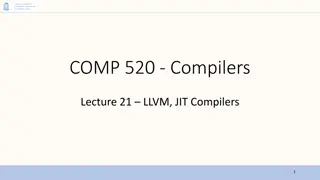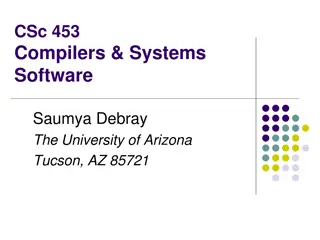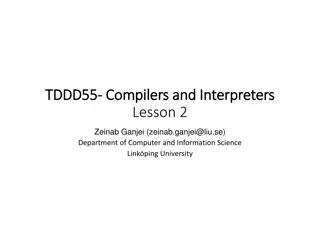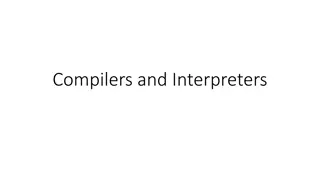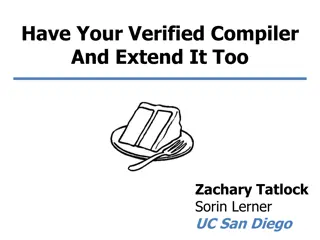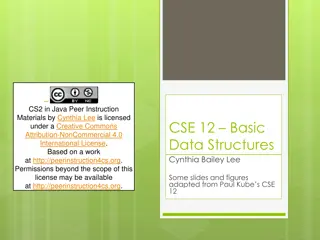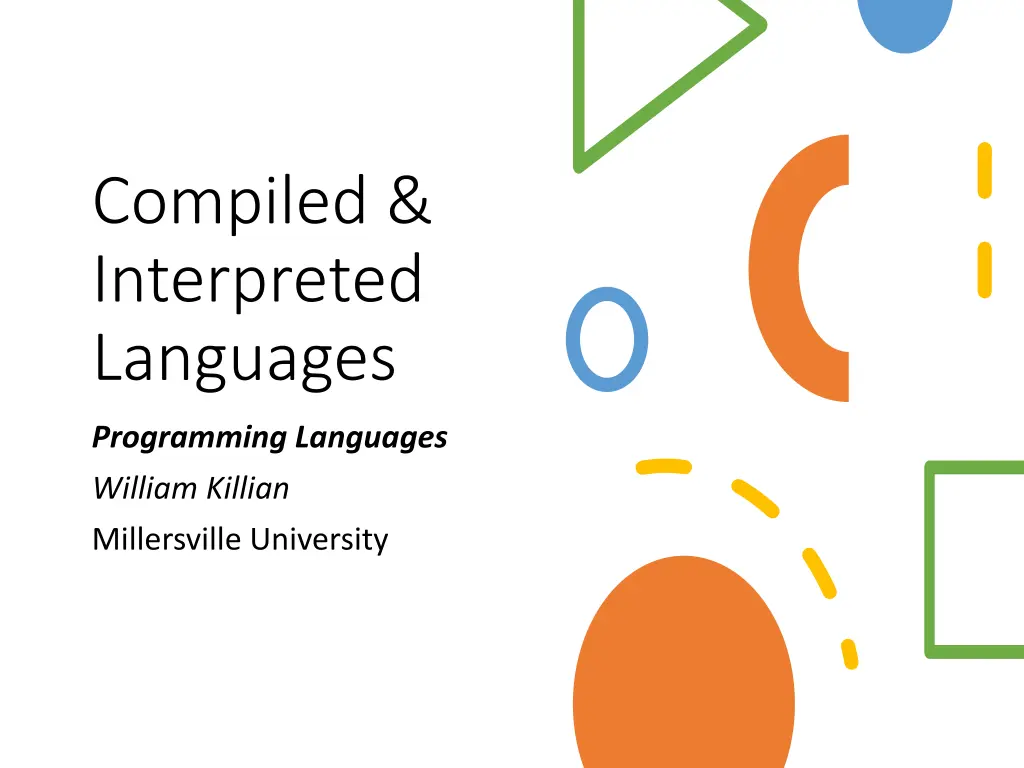
Understanding Language Translation in Programming
Explore the language translation pipeline in programming, covering topics such as scanning, parsing, analysis, optimizing, and code generation. Learn how compilers and interpreters play crucial roles in running programs effectively.
Download Presentation

Please find below an Image/Link to download the presentation.
The content on the website is provided AS IS for your information and personal use only. It may not be sold, licensed, or shared on other websites without obtaining consent from the author. If you encounter any issues during the download, it is possible that the publisher has removed the file from their server.
You are allowed to download the files provided on this website for personal or commercial use, subject to the condition that they are used lawfully. All files are the property of their respective owners.
The content on the website is provided AS IS for your information and personal use only. It may not be sold, licensed, or shared on other websites without obtaining consent from the author.
E N D
Presentation Transcript
Compiled & Interpreted Languages Programming Languages William Killian Millersville University
Lecture Outline The Language Translation Pipeline Scanning Parsing Analysis Optimizing Code Generation Running Your Program The Compiler The Interpreter
The Language Translation Pipeline
The BIG Picture Source: Crafting Interpreters (https://craftinginterpreters.com)
Scanning A scanner takes in the linear stream of characters and chunks them together into tokens Some characters don t mean anything. Whitespace is often insignificant Comments, by definition, are ignored by the language. The scanner usually discards these, leaving a clean sequence of meaningful tokens.
Parsing A parser takes the sequence of tokens and builds a tree structure that mirrors the grammar. Programming language experts call these tree structures syntax trees , ASTs , or just trees
Analysis (i.e. Static Analysis) Binding / Resolution For each identifier we find out where its name is defined and wire the two together. This is where scope comes into play the region of source code where a name refers to a declaration. Type Checking Once we know where names are defined, we can also figure out their types. All operations must be valid. If operations aren t supported, we report a type error.
Optimizing Once we understand what the user s program means, we can change it Optimizing is a safe change to the program that results in the same semantics (e.g. has the same behavior) The resulting program is usually more efficient pennyArea = 3.14159 * (0.75 / 2) * (0.75 / 2); pennyArea = 0.4417860938; Example: Constant Folding
Code Generation The last step Converting it to a form the machine can run. Usually primitive assembly-like instructions a CPU runs and not the kind of source code a human reads. Do we generate instructions for a real CPU or a virtual one? Real CPU: Intel x86, ARM AArch64, IBM PowerPC, MIPS Virtual CPU: LLVM IR, Microsoft CIL, Java Bytecode, Python bytecode Advantages: Portable across Real CPUs Disadvantages: Performance penalty
Running Your Program
Two Major Components Virtual Machine Only needed for languages that target Virtual CPUs Converts from Virtual CPU to Real CPU at runtime Language Runtime Needed by all languages The extra pieces required to have a language operate
Virtual Machine When you target a Virtual CPU, you need a program that converts the Virtual CPU instructions to Real CPU instructions This is done with a Virtual Machine A program that emulates a hypothetical chip supporting your virtual architecture at runtime. Virtual CPU Instructions Real CPU Instructions Virtual Machine
Language Runtime We usually need some services that our language provides while the program is running. Examples: If a language automatically manages memory, we need a garbage collector running to reclaim memory If a language supports instanceof, then we need to keep track of the type of each object during execution. In a compiled language, the code implementing the runtime gets inserted into the resulting executable. If the language is run inside an interpreter or VM, then the runtime lives there.
Compilers and Interpreters
Compilers and Interpreters BOTH must perform all stages in the language translation pipeline The difference is when certain stages happen What languages do you think are compiled? What languages do you think are interpreted? Which languages do you think can be both?
Compiled/Interpreted Languages Language Compiled Both Interpreted Java C / C++ OCaml Javascript Python C#
Compiled Languages Compiling is an implementation technique that involves translating a source language to some other form. When you generate bytecode or machine code, you are compiling. When you transpile to another high-level language you are compiling too. When we say a language implementation is a compiler , we mean it translates source code to some other form but doesn t execute it.
Interpreted Languages When we say a language implementation is an interpreter, we mean it takes in source code and executes it immediately. It runs programs from source . There is no separate entity created
Language != Implementation Language Implementations can either be: Compiled Interpreted Notice how we didn t mention a language? Statements: I can write an interpreter for C++ (see cling) I can write a compiler for Javascript I can write an interpreter for C# I can write a compiler for ___________ I can write an interpreter for ___________
Bonus Video Interpreters and Compilers (Bits and Bytes, Episode 6) https://www.youtube.com/watch?v=_C5AHaS1mOA



